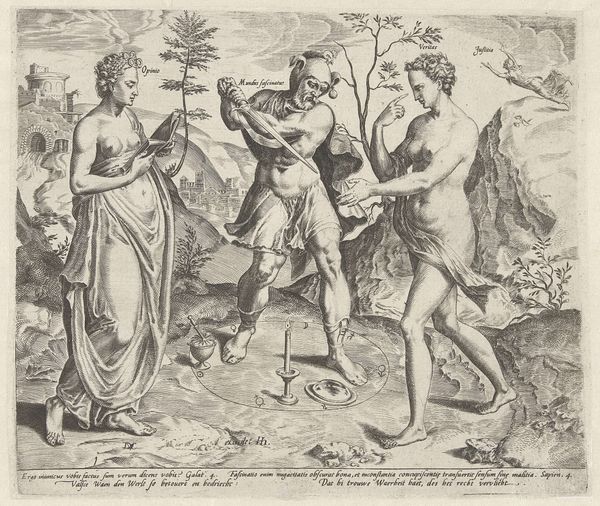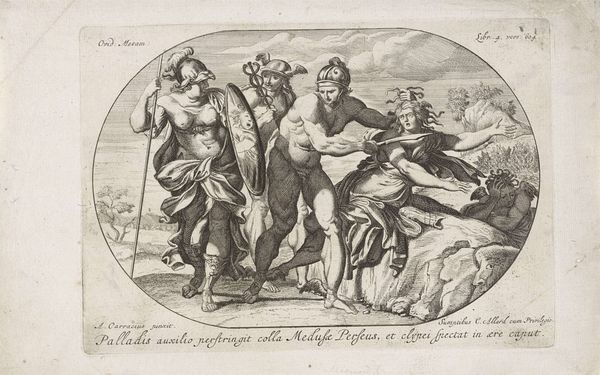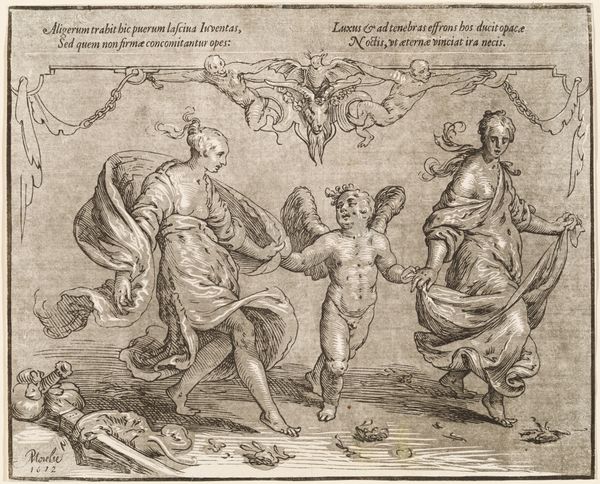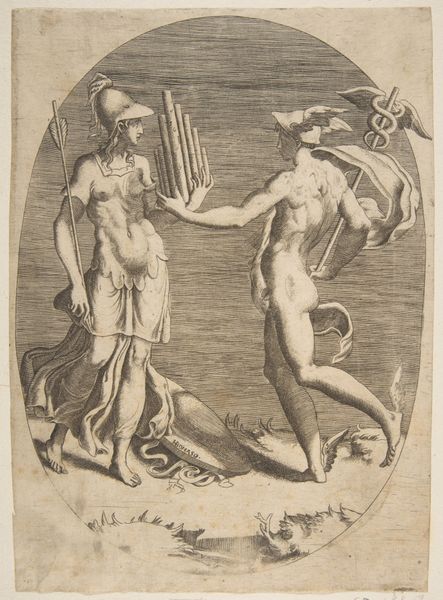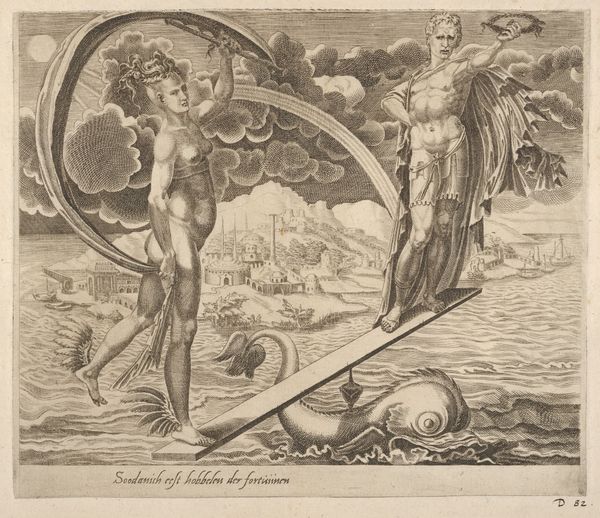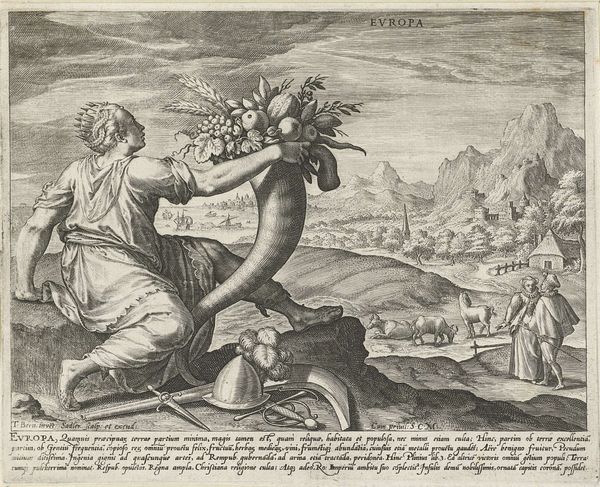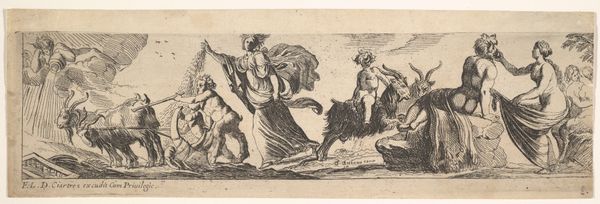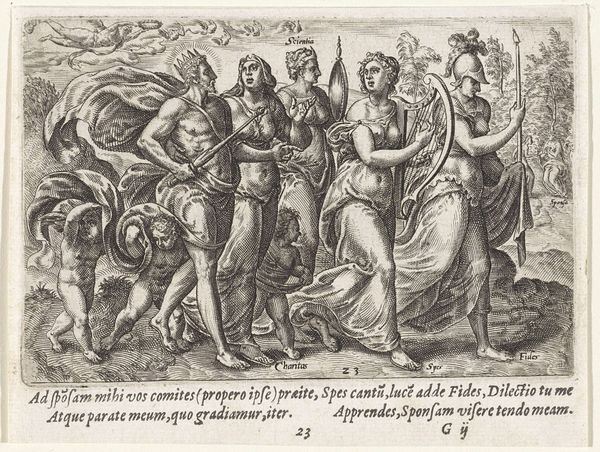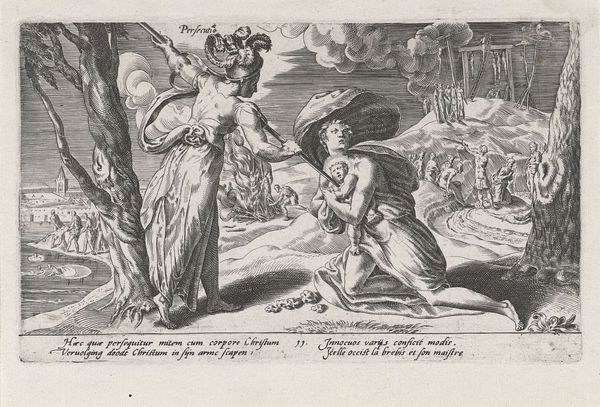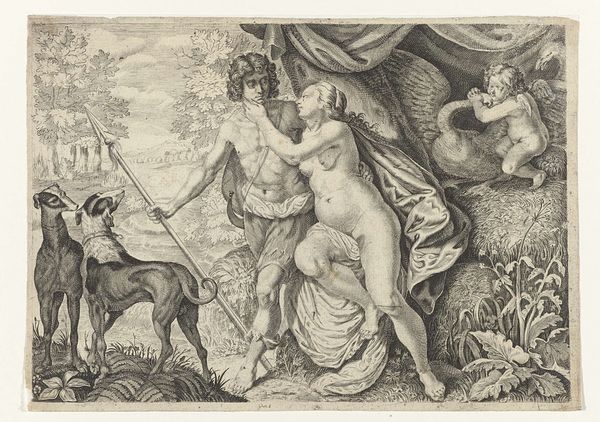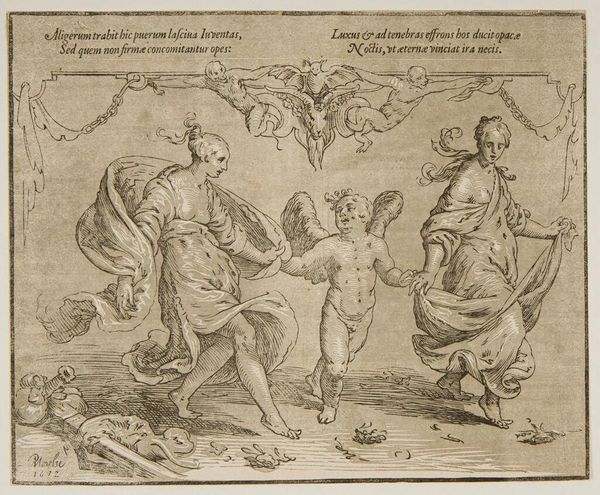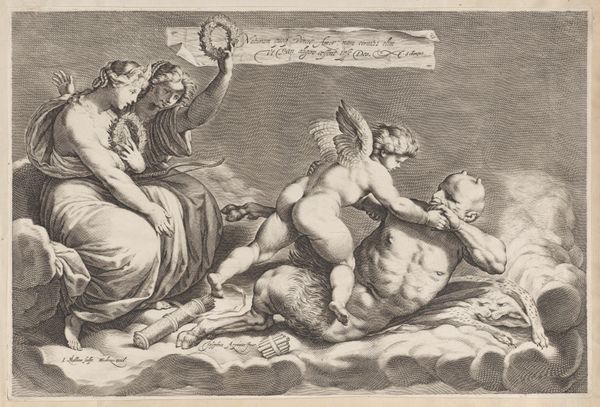
Apollo Granting the Cumaean Sybil's Wish (Apollo Sybillae Cumanae mille annorum atatem indulget), from Ovid's The Metamorphoses, plate 133 1606
0:00
0:00
drawing, print, engraving
#
drawing
# print
#
figuration
#
history-painting
#
italian-renaissance
#
engraving
Dimensions: Sheet: 4 in. × 4 9/16 in. (10.2 × 11.6 cm)
Copyright: Public Domain
Curator: What strikes me immediately is the dynamism in such a stark, linear composition; it feels almost… windswept. Editor: Agreed. What you're sensing likely comes from Antonio Tempesta's approach. This engraving, created in 1606, is entitled "Apollo Granting the Cumaean Sybil's Wish." It’s part of a series illustrating Ovid's Metamorphoses. Curator: Ovid, huh? Right away we're plunged into themes of transformation, desire, and well, myth. It seems significant that Tempesta chose this particular scene. The Sybil, in exchange for her virginity, asks for immortality from Apollo, but forgets to ask for eternal youth, leading to, uh… interesting results later on in her very, very long life. Editor: Precisely. The tragedy lies not just in her aging, but in the erasure of her voice as a woman. Consider the patriarchal bargaining she’s engaged in—trading autonomy for a distorted version of power. It also can't be understated that it echoes larger concerns surrounding women and aging, still persistent to this day. It's grim but very interesting, and that dress almost feels like its stifling her movement and breath, the only wind being shown seems to be catching elsewhere on the figure of Apollo. Curator: I see that completely! And that very sharp engraving style kind of adds to this austere feel. The level of detail is astonishing considering it's just black and white lines. Look how he creates shadows using nothing but cross-hatching. Editor: The crisp, almost cold rendering of flesh really emphasizes her impending doom, too. No soft, flattering strokes here! She seems to already exist outside our known understanding of time or expectations, trapped on an endless loop between living and un-living. What strikes you about the choice of black and white in the piece? Curator: Right? It’s interesting, actually, if this was painted it would feel very grandiose, but it doesn't. I think what I'm gathering here is less grandeur, more, as you say, tragic. Editor: And the constraints perhaps speak to the Sybil's constrained future. I will certainly remember that next time I see this piece.
Comments
No comments
Be the first to comment and join the conversation on the ultimate creative platform.
